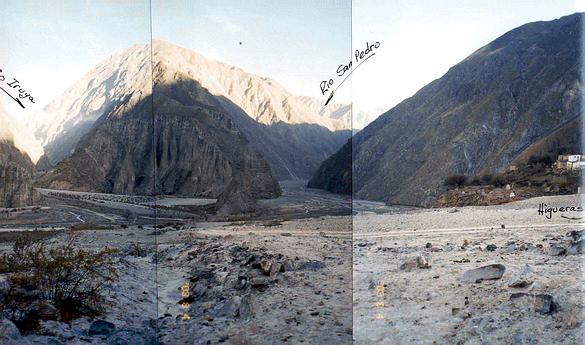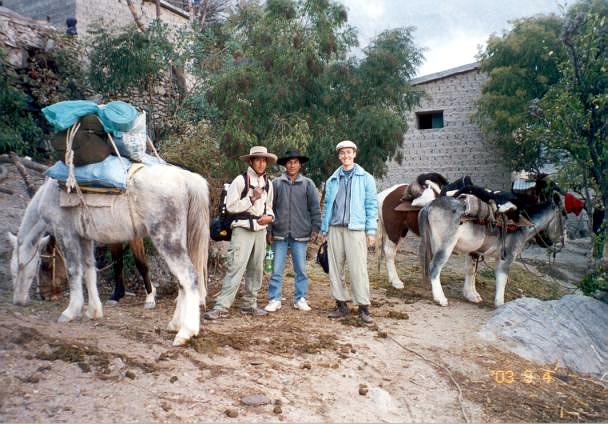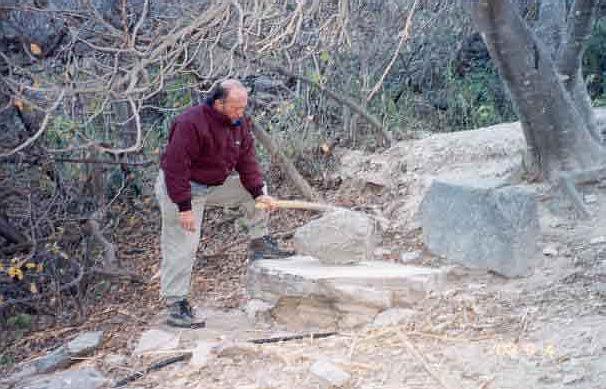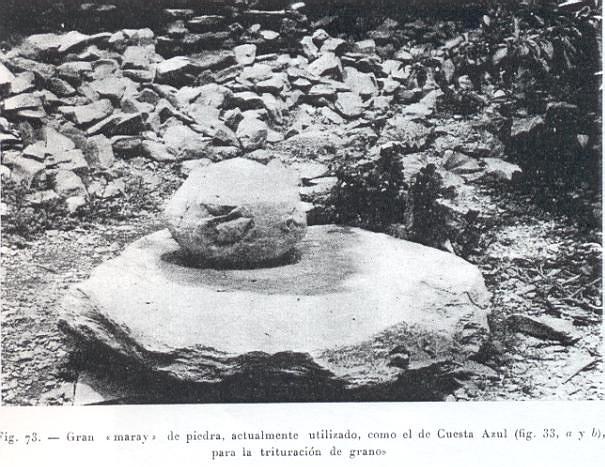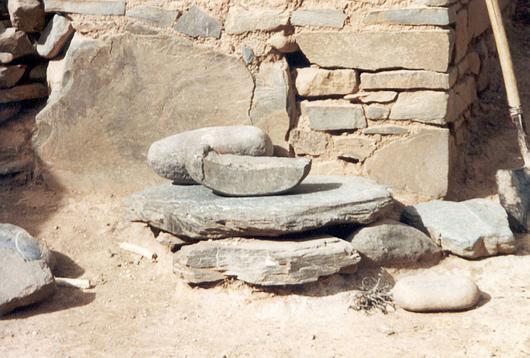We had traveled just over 16 km from Iruya to 1932 meters above sea level, having descended a total of 818 meters, representing a slope of 5.1%, a very significant value for a mountain river. May it be that this very steep slope of the riverbed is one cause of the big problems caused by the Iruya river downstream?
We were entering new Argentine territory little by little. Much has been said in our country of the "Systematization of Bermejo" and of the problems that the "Upper Bermejo River Basin" causes over the rest of the country. Here we were, going through one of the rivers of this basin and part of this conflict zone. The Iruya is considered one of the top rivers in South America in terms of the load of solids it carries. The displacement of this large load of solids in a plastic state seems to have a life of its own, causing the phenomenon that the locals call "the volcan" (mud flood), which greatly conditions the lives of the locals.
This large mass of "solids", consisting of water, mud and stones that are carried by the tributaries of the Iruya at their outlets, build dejection cones (if we can appropriate this geological term) that in many cases plug the main river by building a natural dike and corresponding water reservoir. While the reservoir holds, transit through the riverbed is interrupted, forcing the inhabitants to make wide detours above the hills in order to bypass the deep mud of the volcan obstructions. Later, when the level of the main river increases, bringing its own flood and its own volcan, the main river breaks this dike, restoring the normal flow of the Iruya river. After these floods pass, it is necessary to wait several days until the mass of stone and mud on the riverbed hardens. Otherwise, anyone who tries to cross runs the risk of being trapped. Men and animals are equally afraid of this phenomenon, which has already claimed the lives of several reckless victims.
We saddled our animals and took a last foray through this particular mountain town. Near the cemetery and hidden under a large fig tree we found a mill built on a huge slab with a large stone as a "hand" with which to grind; to enable handling, the “hand” has a large wooden fork attached with wire. In this stone mill, the locals grind grain, especially the corn used to make flour for tasty corn cakes, but also to make the chicha, the only alcoholic beverage that circulates in the area. We noted that this is not the only mill; this is an instrument that is to be found in the courtyard of most of the houses. No doubt, time in these places has not elapsed, the customs still as ancestral as always.

